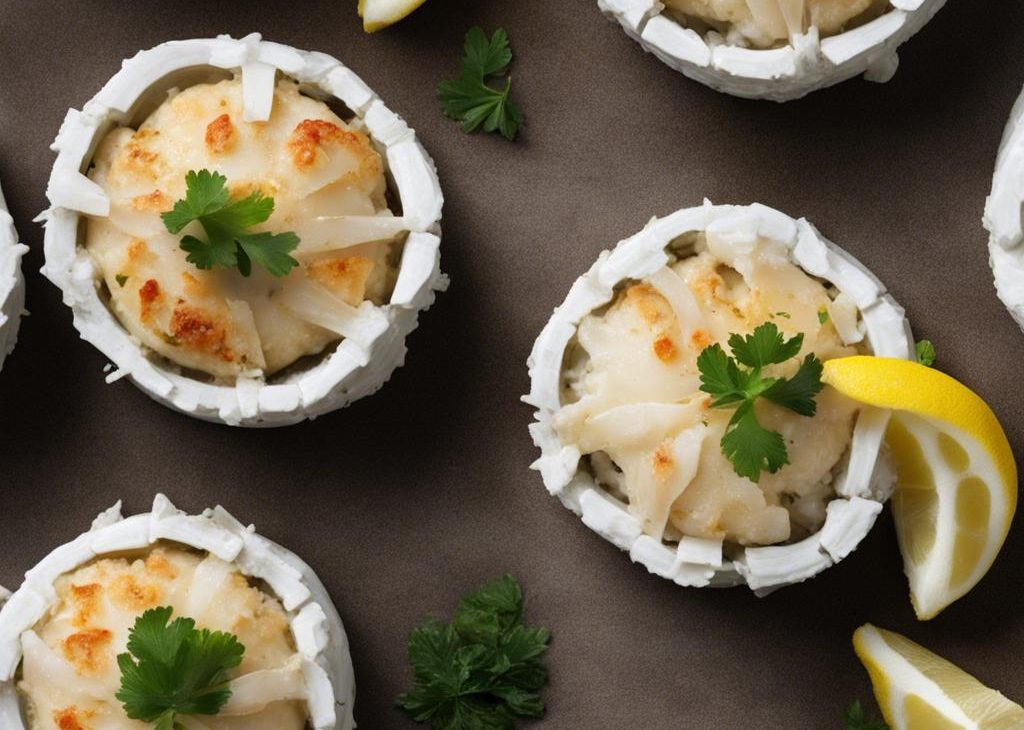


These Maryland crab cakes get the stamp of approval from locals and out-of-towners alike. This classic lump crab cake recipe combines the flavors of lemon, parsley, and Old Bay seasoning, but the most flavor comes from the crab meat itself. For the best texture, use lump crab meat, very little filler, and bake the cakes in a very hot oven.
I’ve lived in Maryland for half my life and say with 100% honesty that crab cakes are as essential as the air this state breathes. My husband was born and raised here and has crab-feasting down to a science. Crab isn’t just food, it’s a way of life here. I’ve served these particular crab cakes to locals and out-of-towners alike, all of whom rave about the recipe. I’m really proud of it and am so excited to share these Maryland crab cakes with you!
I’ve also published solid recipes for Maryland crab soup as well as crab dip!
Crab cakes make a wonderful main dish or even as a sandwich on a toasted bun. If shaped smaller, mini crab cakes are an awesome finger food. With this recipe, you can be confident that you ALWAYS have a quick dinner recipe in your back pocket, as well as an impressive crowd-pleasing appetizer. They make great leftovers, too.
The full written recipe is below, but here’s an overview.
Baking vs. Sautéing: Some cook crab cakes on the stove, but I prefer the baking method. When cooked on the stove, crab cakes are often flattened into patties so the center cooks. For thick jumbo-style crab cakes, I recommend baking them in the oven at a high temperature. They cook very quickly and remain extra plump.
The Chesapeake Bay is home to Maryland’s famous blue crabs. Opinions vary on what the best-tasting crab variety is, and it’s usually determined by where you live. Maryland crabs are known for their delicately sweet, buttery flavor, and Dungeness crabs, found on the West Coast, are known for their impressive size and meatier texture. If you aren’t steaming your own crabs for crab meat, let me help you navigate which crab meat is best for crab cakes.
Whichever crab variety you use, make sure you purchase crab meat labeled “hand-picked” or “fresh-picked,” which means that the crab meat has been picked through for shells and cartilage. (Still, it’s good practice to gently run your hands through the meat for any hard cartilage remnants.)
Crab meat sold out of the shell has been cooked and can be consumed. It’s very rare to find raw crab meat sold out of the shell—it’s almost always cooked before it’s picked out of the shell. At the market, you can find canned, frozen, or fresh (refrigerated) crab meat. Unrefrigerated canned crab meat doesn’t have an ideal flavor for crab cakes. If you need to use canned, look for canned crab meat in the refrigerated section of your market. The fresher the crab meat, the better the crab cake will taste. Ask your grocer where to find the freshest crab meat in the store. I purchase fresh crab meat sold in a 1-pound tub from the seafood counter in my grocery store. Sometimes the tubs are behind the glass or found on ice next to the seafood counter.
For the absolute best crab cake (and crab dip!), I recommend using lump crab meat or a mix of lump crab meat and backfin meat. Lump crab meat guarantees those big, mouthwatering bites of crab. Don’t worry, all the other ingredients are pretty inexpensive.
Let’s walk through each ingredient so you understand its importance. While there are a few flavorful and binding ingredients, the real star of this crab cake is the crab itself. These flavors and binders simply enhance the true taste of crab.
Since we’re baking the crab cakes and not sautéing them in butter or oil, brush the cakes with a little melted butter prior to baking. This tiny addition gives them that unmistakeable restaurant flavor. When they come out of the oven, squeeze a little lemon juice on top!
While we have binding ingredients like mayonnaise and egg, crab cakes need a filler so they remain intact when cooked. And this is where people are very opinionated: what is the best filler? I’ve tested many and have even asked popular restaurants to spill the beans—most are very secretive about the crab cake ingredients they use! My #1 crab cake filler choice is cracker crumbs—specifically, saltine cracker crumbs. Bread crumbs are flavorless and too crunchy. Go for the saltines! To make the crumbs, you can place the crackers in a zipped-top bag and crush the heck out of them with a rolling pin, or you can use a little ninja, a big food processor, or even a blender.
Keep it simple and serve with a squeeze of fresh lemon. These Maryland crab cakes are so juicy and flavorful that they don’t need tartar sauce or cocktail sauce, but both are popular finishing touches. (I love a touch of cocktail sauce with mine.) If you’re making crab cakes for a big family meal or on your menu of Memorial Day recipes, here’s what I recommend serving with your crab cake dinner:
For even more inspiration here are 15+ summer dinner ideas! And don’t forget the chocolate chip cookies or vanilla cupcakes for dessert!
For the best texture, use lump crab meat, little filler, and bake the cakes in a very hot oven. Serve with lemon wedges, a garnish of chopped parsley, and/or cocktail sauce or tartar sauce. For more success tips and to learn which crab meat to use, see blog post above.